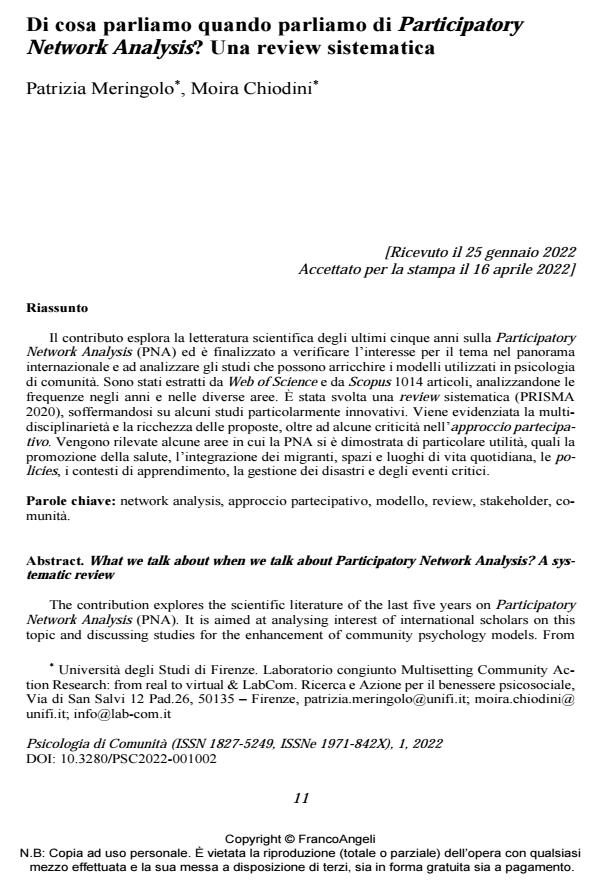What we talk about when we talk about Participatory Network Analysis? A systematic review
Journal title PSICOLOGIA DI COMUNITA’
Author/s Patrizia Meringolo, Moira Chiodini
Publishing Year 2022 Issue 2022/1
Language Italian Pages 32 P. 11-42 File size 462 KB
DOI 10.3280/PSC2022-001002
DOI is like a bar code for intellectual property: to have more infomation
click here
Below, you can see the article first page
If you want to buy this article in PDF format, you can do it, following the instructions to buy download credits

FrancoAngeli is member of Publishers International Linking Association, Inc (PILA), a not-for-profit association which run the CrossRef service enabling links to and from online scholarly content.
The contribution explores the scientific literature of the last five years on Participatory Network Analysis (PNA). It is aimed at analysing interest of international scholars on this topic and discussing studies for the enhancement of community psychology models. From Web of Science and Scopus 1014 articles were extracted, analysing their frequencies over the years in different areas. A systematic review was carried out (PRISMA 2020), focusing on some particularly innovative studies. The multidisciplinary and fruitful proposals are highlighted, as well as some critical aspects in defining participatory approach. PNA has proven to be effective in fields like health promotion, migrants’ integration, spaces for everyday life, policies, learning environments, disasters and critical events management.
Keywords: network analysis, participatory approach, model, review, stakeholder, communi-ty.
- La Social Network Analysis per la rigenerazione urbana: il caso del Progetto Spiazziamo Cinzia Novara, Martina Farace, Massimo Santinello, in PSICOLOGIA DI COMUNITA' 2/2024 pp.25
DOI: 10.3280/PSC2023-002002
Patrizia Meringolo, Moira Chiodini, Di cosa parliamo quando parliamo di Participatory Network Analysis? Una review sistematica in "PSICOLOGIA DI COMUNITA’" 1/2022, pp 11-42, DOI: 10.3280/PSC2022-001002